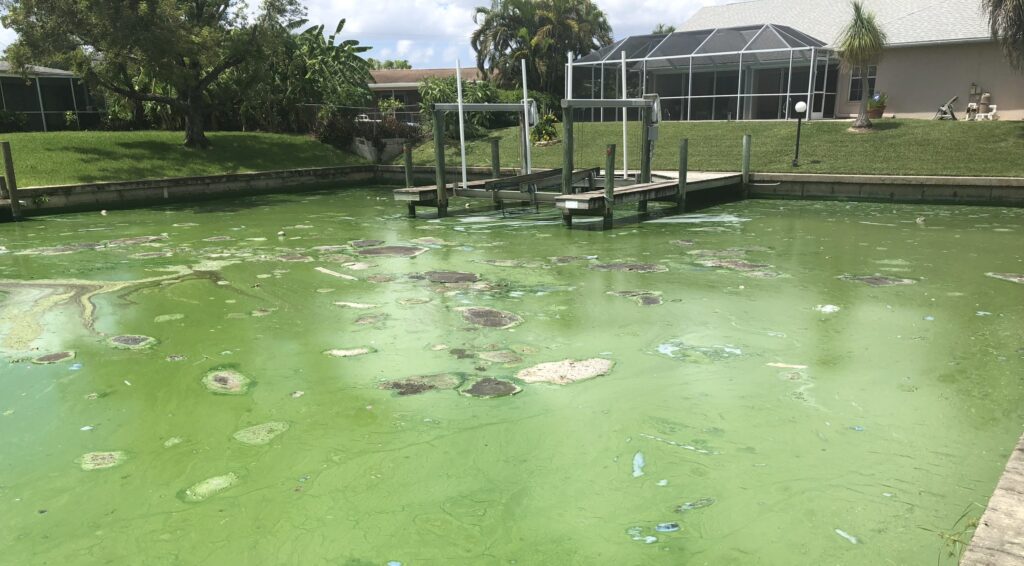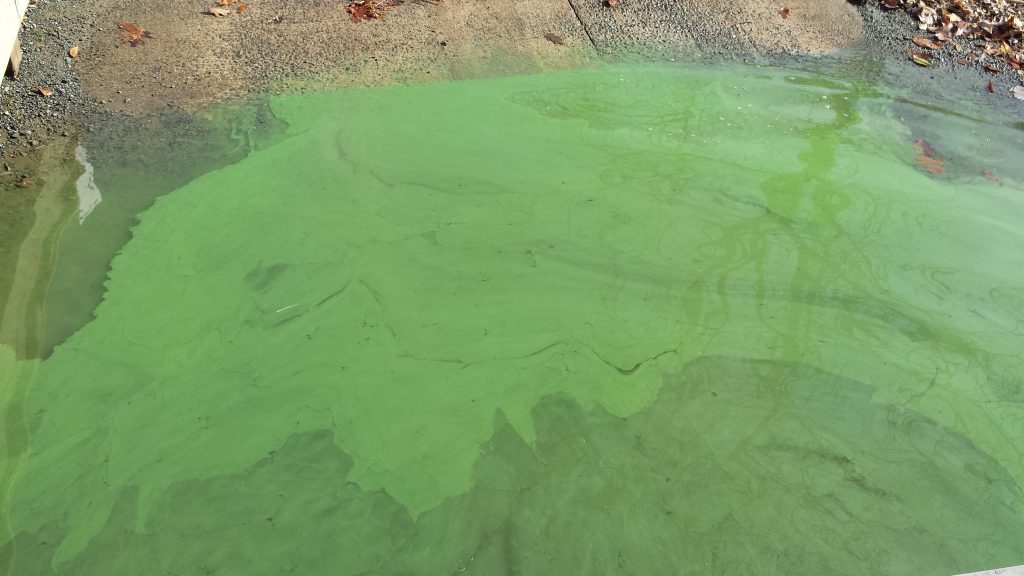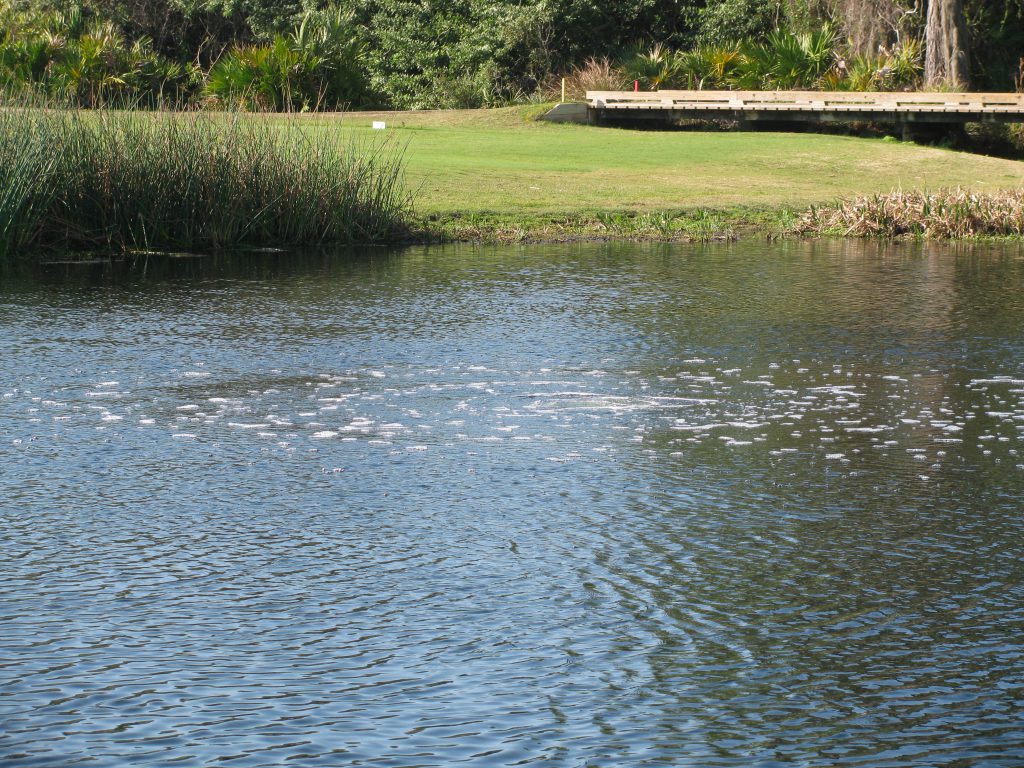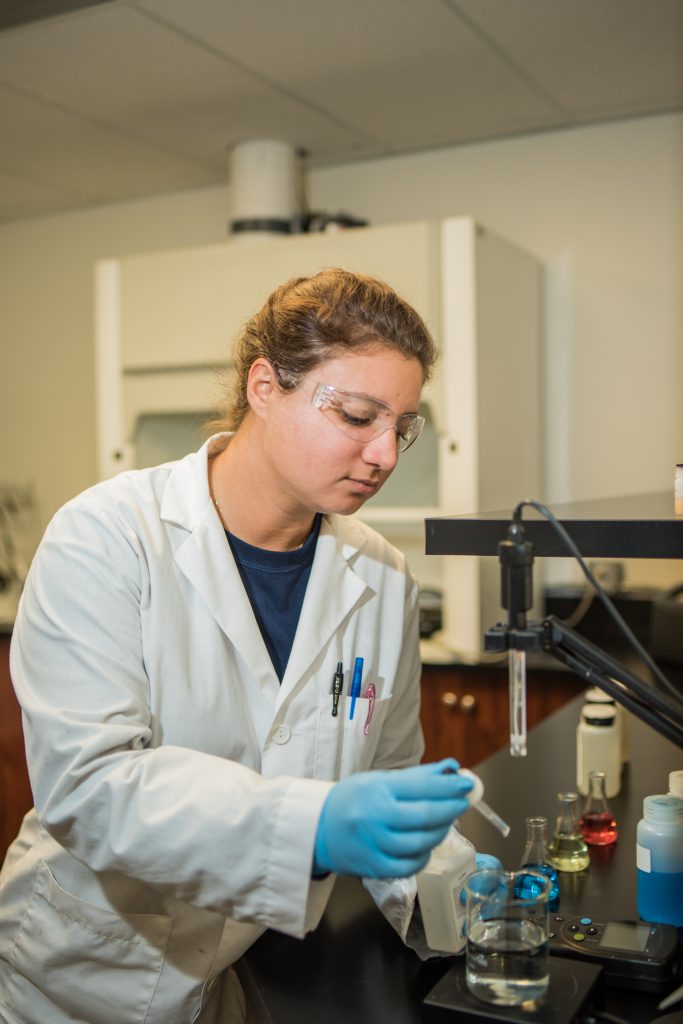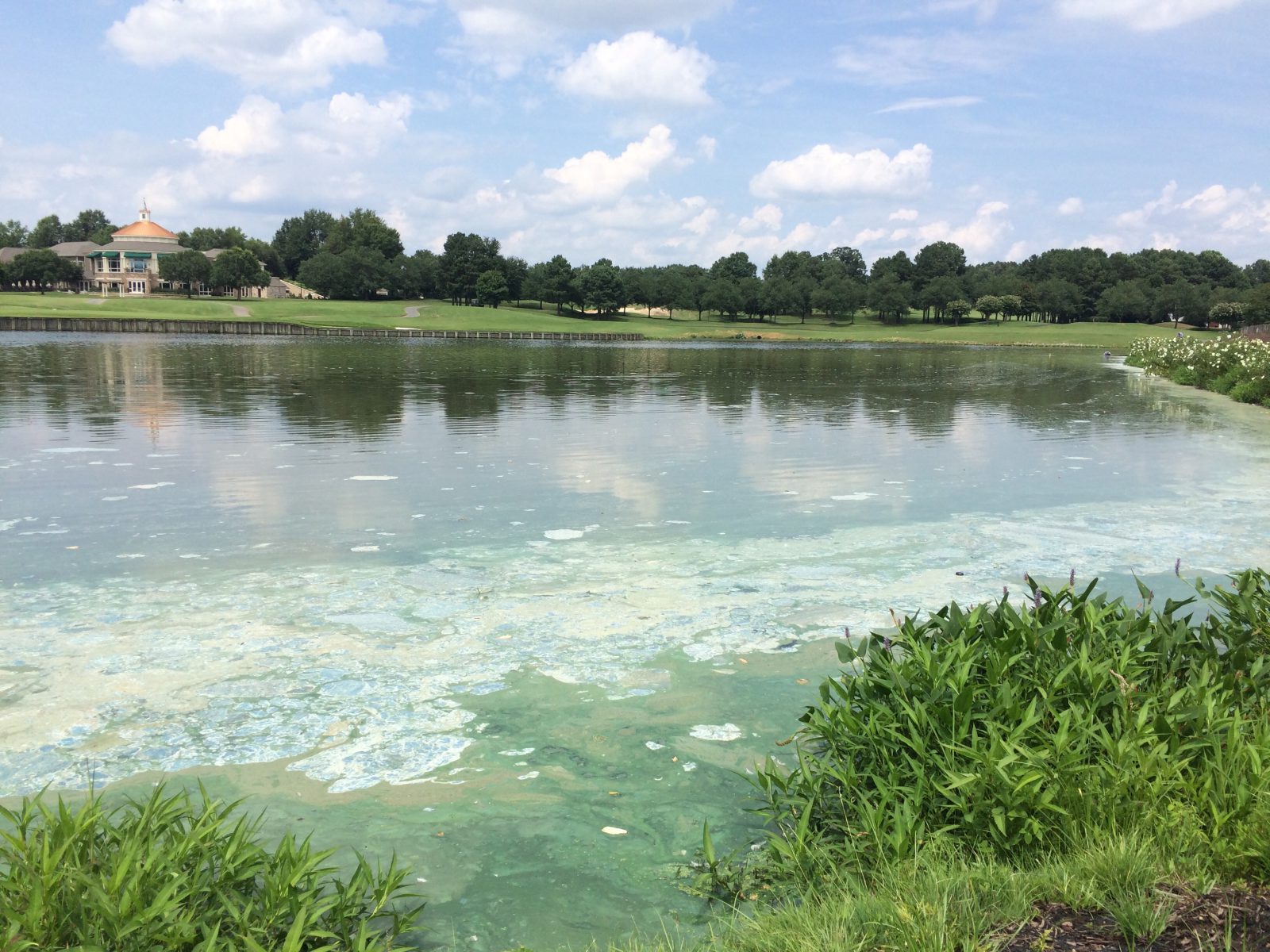
Are Lake & Pond Algal Blooms Harmful to Humans?
During the summer, we all look forward to recreational activities on local lakes and ponds; however, sometimes our plans are canceled due to unsightly, smelly, harmful algal blooms. Knowing a little about how HABs form can help us understand their health effects, ways to identify them, and strategies to prevent them.
How Do Harmful Algal Blooms Form in a Lake?
Algae are a natural feature in many aquatic ecosystems. Most lakes have some algae growth on a regular basis, especially during the warm summer months, but it is crucial to stay on top of the algae development since blooms can happen quickly – before you know it, there are ugly floating mats on the lake’s surface. Likewise, certain species like cyanobacteria (also referred to as blue-green algae) can create concerning conditions by releasing dangerous toxins into the water.
Here are some signs that a bloom may be harmful:
- Visible pond scum on the lake’s surface
- Various colors such as reddish-brown, blue-green, or pea soup color
- Often looks like paint floating on the water
Toxicity of Blue-Green Algae
Each bloom’s toxicity can vary and it’s hard to predict how dangerous a bloom will be as its toxicity changes daily. If the lake on your property looks like it may be developing dangerous levels of algae growth, take immediate steps. Not all blooms are toxic, and the only way to be sure that a bloom may become toxic is through laboratory testing. However, it can take a few days to collect and test samples, and by then, it may be too late.
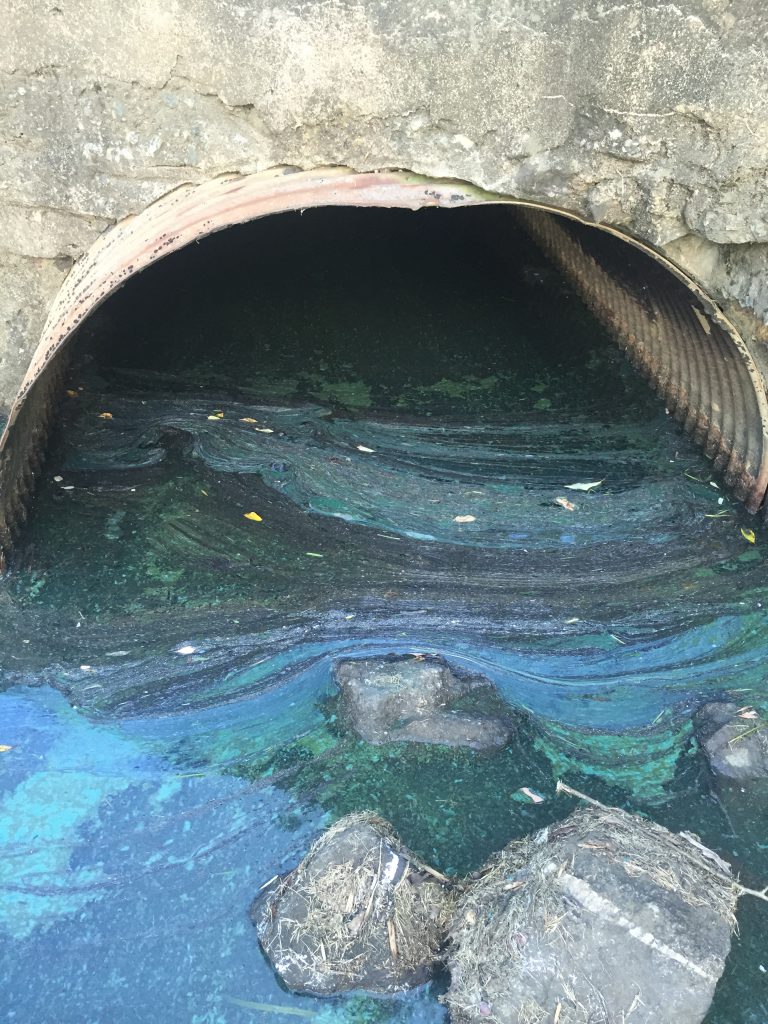
Why Do Lakes Have Algal Blooms?
Most often, harmful and toxic algal blooms occur because a lake or pond is not healthy. The lake may have an excess nutrient load due to the presence of too much phosphorus and nitrogen. When there are too many of these nutrients in the lake water, algae can overgrow or bloom.
A waterbody’s health can change year over year, depending on the weather and other factors in its surrounding environment. This is why a lake that was seemingly healthy suddenly experiences a bloom. This doesn’t necessarily mean the lake is destined for poor health, but it does indicate that there are imbalances that must be addressed.
Conditions that may change lake health and cause a harmful algal bloom include:
- Changing weather and climate—longer dry spells can lead to more algal blooms.
- Excess nutrients in sediment—nutrients are absorbed by the lake’s sediment but are sometimes released due to a variety of conditions that are difficult to predict
- Development around a lake—if the lake or pond area is developed and the vegetation removed, there can be more pollution in the waterbody due to runoff
- Water flow changes—if the water flow is no longer adequate, it may become stagnant and the temperature may rise, creating conditions that are favorable for algae blooms
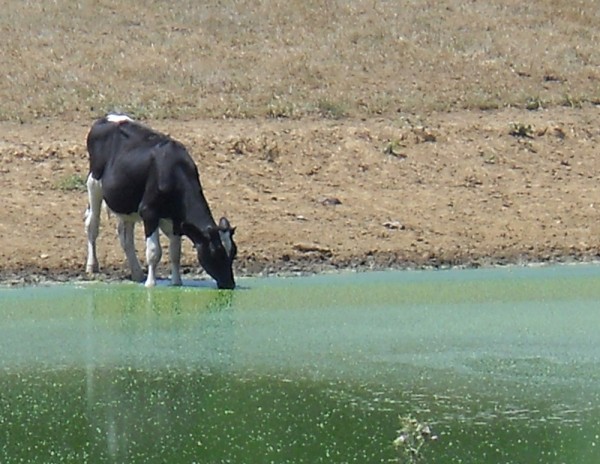
What Are the Effects of Harmful Algal Blooms?
The toxins produced by harmful algal blooms can cause serious health impacts to pets, people, wildlife, and livestock. These health effects can range from skin irritation and rashes, gastrointestinal illnesses, neurological problems, and even death.
Toxic Algae Exposure
Exposure to harmful toxins can occur when:
- Swimming or wading in water affected by a bloom
- Inhaling airborne toxins while water skiing, jet-skiing, boating, or walking near a lake with a bloom
- Drinking water contaminated with algae toxins
Signs that you or your pet may have come in contact with toxins from a harmful bloom include:
- Skin, eye, nose, throat, and respiratory irritations and rashes
- Abdominal pain, headache, vomiting, neurological symptoms, diarrhea, liver, and kidney damage
- Sudden, unexplained illness of your pet after it has been playing in or drinking lake water
If you think you or your pet have been exposed to harmful toxins, seek medical or veterinary care immediately. If you see a bloom, contact the manager of that waterbody. Lake and pond managers often depend on community members to report blooms.
Strategies to Manage Harmful Algal Blooms
Once algae have overgrown enough to cause a large bloom, management can be challenging. Prevention is the best way to ensure harmful algal blooms don’t occur. Association boards and community managers can help prevent or minimize the risk of harmful algal blooms by taking the following steps:
- Ensure there is plenty of water movement and dissolved oxygen by installing fountains and submersed aerators.
- Pick up and properly dispose of pet waste, which is a common source of excess bacteria and nutrients.
- Implement landscaping strategies such as xeriscaping that help improve groundwater filtration before the water enters the lake.
- Replace manicured lawns or cement banking around the lake with native plants for additional filtration and shoreline stabilization. Allow native deep-rooted plants to grow close to the water’s edge.
- Promptly remove grass clippings and leaves to prevent their decomposition in and around lakes and ponds.
- Reduce nutrient-rich runoff by using phosphorus-free fertilizers and detergents.
- Stock fish, such as triploid grass carp, that feed on algae and nuisance aquatic plants. Triploid grass carp are not legal in all states. Make sure to check your state regulations before stocking.
Maintaining Balanced Water Quality
To eliminate algae, the best course of action is to contact a freshwater management professional who can monitor and maintain balanced water quality and advise and apply appropriate management solutions. These professionals will ensure that the lake or pond’s water is clean and healthy and that the levels of algae remain at beneficial, manageable levels.
Improve Water Quality with Nutrient Remediation
SOLitude Lake Management is a nationwide environmental firm committed to providing sustainable solutions that improve water quality, enhance beauty and preserve natural resources.
SOLitude’s team of aquatic scientists specializes in the development and execution of customized lake, stormwater pond, wetland and fisheries management programs. Services include water quality testing and restoration, algae and aquatic weed control, installation and maintenance of fountains and aeration systems, shoreline erosion control, muck and sediment removal and invasive species management. SOLitude partners with homeowners associations, golf courses, private landowners, businesses and municipalities. SOLitude Lake Management is part of Rentokil, a leading business services company, operating across the United States, Canada and Puerto Rico.
For more information, visit SOLitude Lake Management at solitudelakemanagement.com, and connect on Facebook, LinkedIn and Twitter.








